Mateusz Wójcik
Electoral Agitation Data Set: The Use Case of the Polish Election
Jul 13, 2023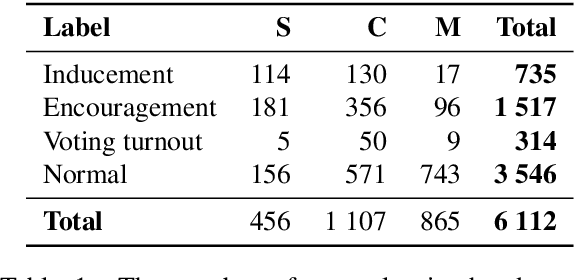
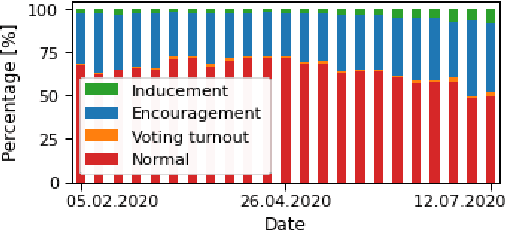
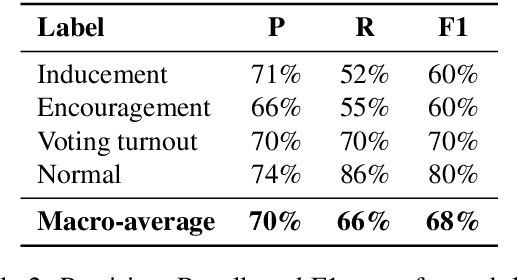
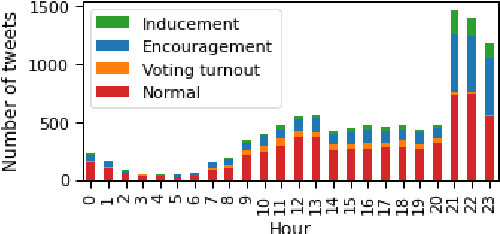
Abstract:The popularity of social media makes politicians use it for political advertisement. Therefore, social media is full of electoral agitation (electioneering), especially during the election campaigns. The election administration cannot track the spread and quantity of messages that count as agitation under the election code. It addresses a crucial problem, while also uncovering a niche that has not been effectively targeted so far. Hence, we present the first publicly open data set for detecting electoral agitation in the Polish language. It contains 6,112 human-annotated tweets tagged with four legally conditioned categories. We achieved a 0.66 inter-annotator agreement (Cohen's kappa score). An additional annotator resolved the mismatches between the first two improving the consistency and complexity of the annotation process. The newly created data set was used to fine-tune a Polish Language Model called HerBERT (achieving a 68% F1 score). We also present a number of potential use cases for such data sets and models, enriching the paper with an analysis of the Polish 2020 Presidential Election on Twitter.
Classical Out-of-Distribution Detection Methods Benchmark in Text Classification Tasks
Jul 13, 2023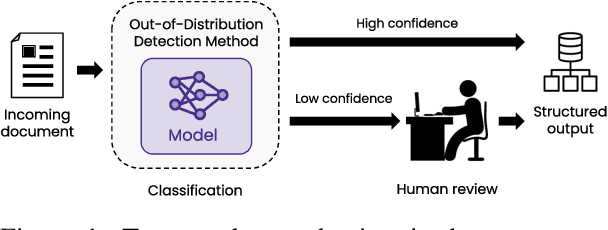
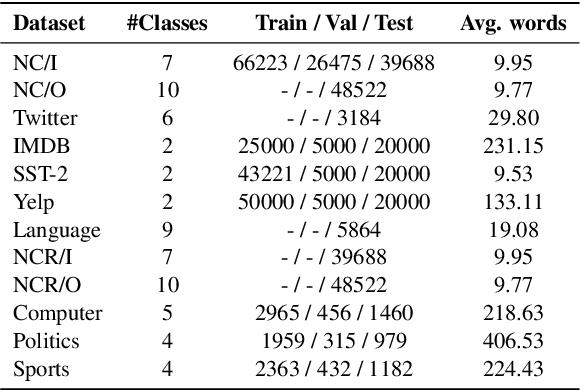
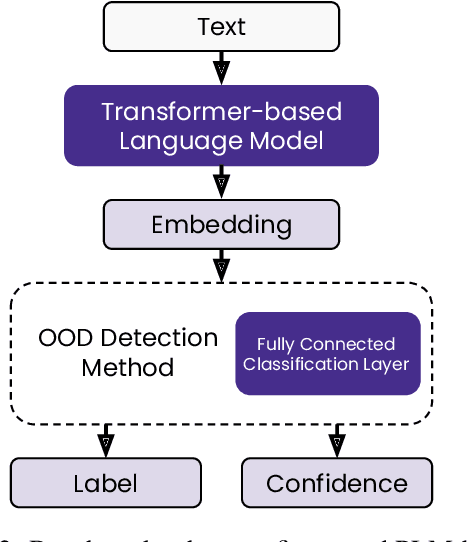
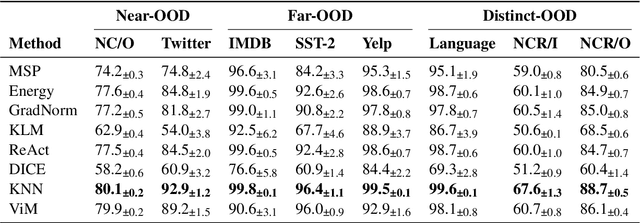
Abstract:State-of-the-art models can perform well in controlled environments, but they often struggle when presented with out-of-distribution (OOD) examples, making OOD detection a critical component of NLP systems. In this paper, we focus on highlighting the limitations of existing approaches to OOD detection in NLP. Specifically, we evaluated eight OOD detection methods that are easily integrable into existing NLP systems and require no additional OOD data or model modifications. One of our contributions is providing a well-structured research environment that allows for full reproducibility of the results. Additionally, our analysis shows that existing OOD detection methods for NLP tasks are not yet sufficiently sensitive to capture all samples characterized by various types of distributional shifts. Particularly challenging testing scenarios arise in cases of background shift and randomly shuffled word order within in domain texts. This highlights the need for future work to develop more effective OOD detection approaches for the NLP problems, and our work provides a well-defined foundation for further research in this area.
Domain-Agnostic Neural Architecture for Class Incremental Continual Learning in Document Processing Platform
Jul 11, 2023Abstract:Production deployments in complex systems require ML architectures to be highly efficient and usable against multiple tasks. Particularly demanding are classification problems in which data arrives in a streaming fashion and each class is presented separately. Recent methods with stochastic gradient learning have been shown to struggle in such setups or have limitations like memory buffers, and being restricted to specific domains that disable its usage in real-world scenarios. For this reason, we present a fully differentiable architecture based on the Mixture of Experts model, that enables the training of high-performance classifiers when examples from each class are presented separately. We conducted exhaustive experiments that proved its applicability in various domains and ability to learn online in production environments. The proposed technique achieves SOTA results without a memory buffer and clearly outperforms the reference methods.
Neural Architecture for Online Ensemble Continual Learning
Nov 27, 2022Abstract:Continual learning with an increasing number of classes is a challenging task. The difficulty rises when each example is presented exactly once, which requires the model to learn online. Recent methods with classic parameter optimization procedures have been shown to struggle in such setups or have limitations like non-differentiable components or memory buffers. For this reason, we present the fully differentiable ensemble method that allows us to efficiently train an ensemble of neural networks in the end-to-end regime. The proposed technique achieves SOTA results without a memory buffer and clearly outperforms the reference methods. The conducted experiments have also shown a significant increase in the performance for small ensembles, which demonstrates the capability of obtaining relatively high classification accuracy with a reduced number of classifiers.
 Add to Chrome
Add to Chrome Add to Firefox
Add to Firefox Add to Edge
Add to Edge